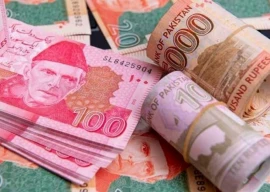
Plastic is turning into one of the greatest environmental challenges as the world, according to UN, annually produces more than 430Mt of plastic, two-thirds or 230Mt of which are short-lived products that quickly become waste, filling the ocean and often working its way into the human food chain.
If it were a country, environmentalists warned, the ‘Plastic Kingdom’ would easily be the world’s fifth largest greenhouse gas emitter. According to Oceana, two garbage trucks’ worth of plastic every minute enter the oceans. The impacts of plastic pollution, per WWF, cost up to 1 million lives each year in low- and middle-income countries (LMICs), tipping the world that the level of mismanaged plastic waste may increase by almost 90% by 2040.
Addiction to plastic, what UN experts call an ‘environmental nightmare’, is adversely affecting the aquatic ecosystem with 23Mt every year leaking into and polluting lakes, rivers and seas. The pandemic intensified the challenge given that 1% of single-use masks used weren’t disposed of properly, up to 10Mt of them could enter and pollute the ocean every month.
Plastic waste, which accounts for 85% of total marine litter, poses serious threats to marine life, human health through ingestion of plastic-contaminated seafood and livelihoods of coastal communities. A UNEP report in 2021 revealed the lopsided injustices being brought about by plastic to marine wealth, underscoring that the monetary value of losses of marine natural capital, up to $2,500 billion per year, had far exceeded the global plastic market, $540 billion.
China is the world’s largest producer and consumer of plastic. In 2021, it accounted for 20% of worldwide plastic demand, and its per capita plastic waste generation, per ADP, was just about 18kg compared to Australia’s 59kg, US’s 53kg and Korea’s 44kg. The UN estimated China’s plastic waste per capita in 2021 at 46.6kg — still a fraction of what every person in America (220.5kg), Canada (177.9kg) and EU (121.6kg) produced.
China produces more than 60Mt of plastic waste every year; its recycling rate of 30% is higher than the global average of 9%. In comparison, the US, per Greenpeace, in 2021 recycled less than 5% of total plastic waste generation. In the EU, each person in 2021 generated 35.9kg of packaging plastic waste. The bloc’s recycling rate, 38%, was however better than both China and global average.
Up until 2017, China was considered among the world’s largest plastic waste importers for it had long absorbed about half of global plastic scrap including a significant share of the EU plastic waste exports. Once Beijing in 2018 imposed import bans on 24 types of recyclable waste, its plastic waste imports dropped by 95% within a year, thinning out developed world’s options to get rid of its waste. Germany, Japan, the US, the UK and other European countries are top plastic waste exporters. China wasn’t even in the top-10.
Following China’s embargo on plastic waste imports, the US redirected its exports to developing countries. An analysis of the US Census Bureau data in 2018 by Greenpeace’s Unearthed found that nearly half of the country’s plastic waste exports in the first six months of 2018 had gone to poor Asian countries.
An IPEN study this March unveiled that the UN data didn’t account for 1.8 million metric tonnes of plastic waste, which was exported to developing countries by the EU, Japan, the UK and the US and had inundated them with much more plastic waste than previously thought. In the aftermath of Beijing’s ban, several rich countries including the US and the UK made Pakistan a junkyard of their hazardous and contaminated plastic and other waste.
The developed world shouldn’t see LMICs as a dumping ground of its plastic waste. Plastic pollution is disproportionately harming these countries, needing at least $26 billion to develop their capacity and infrastructure to safely manage the plastic waste. This act of exploiting the vulnerabilities of the developing nations and exposing them to the worst effects of plastic pollution should be reversed immediately.
Published in The Express Tribune, November 20th, 2023.
Like Opinion & Editorial on Facebook, follow @ETOpEd on Twitter to receive all updates on all our daily pieces.



1719211536-0/BeFunky-collage-(81)1719211536-0-165x106.webp)





1729685382-0/Untitled-design-(57)1729685382-0-270x192.webp)











COMMENTS
Comments are moderated and generally will be posted if they are on-topic and not abusive.
For more information, please see our Comments FAQ